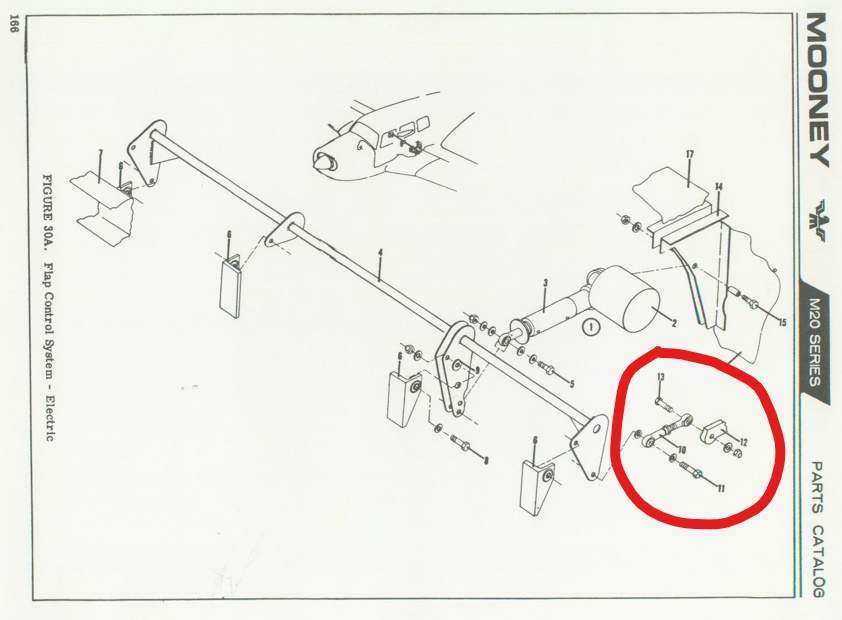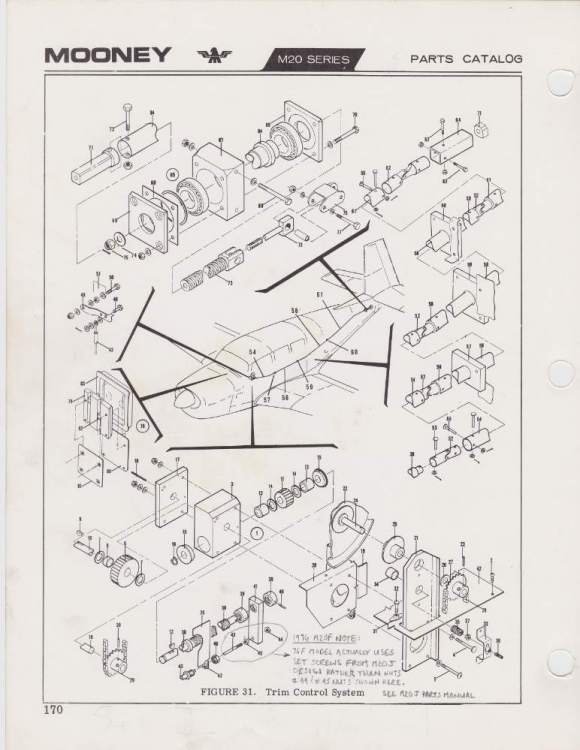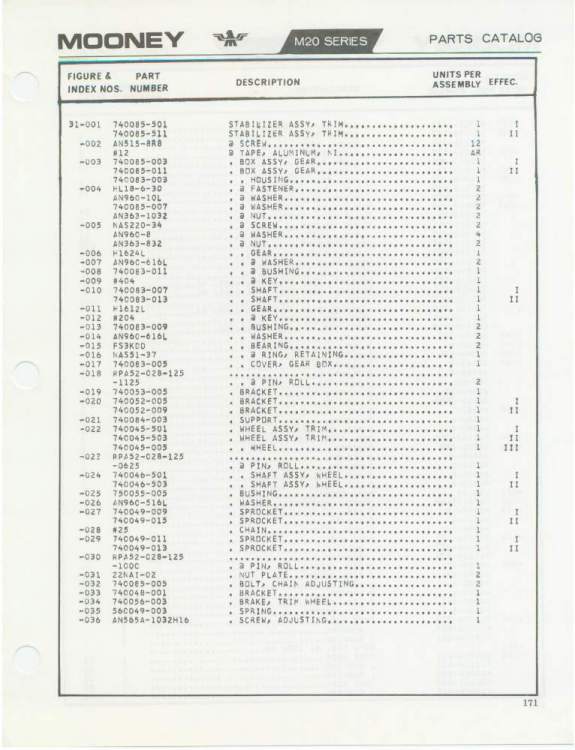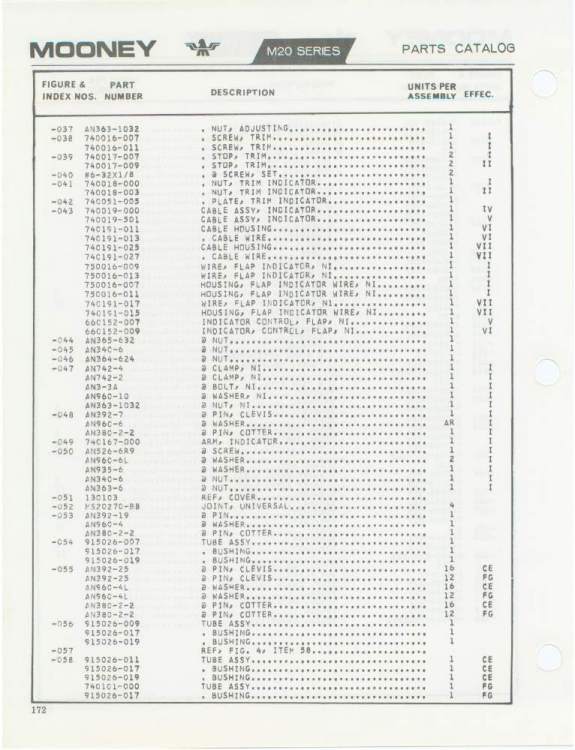-
Posts
1,496 -
Joined
-
Last visited
-
Days Won
5
Content Type
Profiles
Forums
Blogs
Gallery
Downloads
Media Demo
Events
Everything posted by Vance Harral
-
You raise a good point. Garmin revises the G5 STC w/ AML installation manual frequently. Best as I can tell, the latest release of this document is revision 26, dated May, 2021: https://static.garmin.com/pumac/190-01112-10_26.pdf The verbiage about the altimeter in that document appears unchanged to me from earlier revisions. Section 1.6.1.5 makes reference to G5 air data functions that include secondary airspeed, altitude, and vertical speed. Later in the document, it says, "The installation of the G5 requires the retention of the mechanical airspeed indicator, altimeter, and vertical speed indicator." I don't find any verbiage in the document that removes this restriction when two G5s are installed. In real life, I know a lot of people are flying around referencing only their single or dual G5s, and not looking at all at the mechanical instruments that surround them. As an instructor, my stance is this: for VFR, I have no issue with it. For IFR, I have no issue with it in the enroute environment, especially when using the altitude hold function of an attached GFC500 autopilot. But when it comes to instrument approaches, missed approaches, and departure procedures, I expect pilots to use the steam gauge altimeter as the reference for minimum altitudes. My rationale for this stance is not just pedantry about the STC. It's also because, for whatever reason, every single G5 I've flown with (about half a dozen) indicates higher than the mechanical altimeter. In cases where the G5 was installed and the altimeter not adjusted by the shop, indicated altitude on the G5 runs almost 100' higher than the mechanical altimeter. In cases where the G5 has been adjusted, it still runs 30-40' higher. In these airplanes, using the G5 as a reference puts you 30-100' below the DA/MDA as indicated by the certified instrument. That's a big deal for 200' AGL minimums on an ILS or LPV approach. I don't know if there is something systematic about the G5 that causes this, or all the data points in my small sample size just happen to be on the high side. But I've watched from the right seat as an instrument student with less-than-perfect skills descended 100' past minimums on an ILS using an uncalibrated G5 as a reference. It's eye opening, and I decided at that moment I was not cool with just calling the uncertified G5 altimeter good enough.
-
Bear in mind that the G5 is not certified as a primary altimeter. The information it provides is advisory only, from a legal perspective. So the way this is "supposed" to work is that when you ask for a static system check, the shop should first test/adjust/certify the primary altimeter, i.e. the classic steam gauge. In the OP's case, sounds like this was done incorrectly, or not at all. Once that's done, the G5 altimeter can also be tested, and adjustments made to match it up with the reference standard, so the two altimeters are close. Different shops have different attitudes about this (ask me how I know). Some shops adjust the G5 as a matter of course, while others ignore it, saying, "that thing is only advisory". In the latter case, you can explicitly ask them to adjust it - for an extra fee, of course.
-
No problems with fuel leaks since the last update. The airplane went through another annual inspection this spring, and that seal looked OK, so we just re-used it. I'm wary of using replacement seals at this point, so we're going to use the existing one until/unless it fails a visual inspection. The seal in question is Mooney P/N 940057-001, LASAR lists it as their P/O #18172. It's not a "standard" part, you can't order it from Sky Geek or Spruce. These gaskets are produced by Mooney, and you have to order them through an MSC. They are of course ridiculously overpriced, I paid $44.21 when I ordered one in February 2020. I'm sure there are Mooneys out there with Duke's fuel selectors, which are flying with a black or grey-market version of this seal, that was just cut from a spare sheet of rubber. I'm even sympathetic to that, given our recent experience with the "factory approved" part. But if you want the official part, you have to order it from Mooney, through an MSC.
-
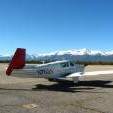
Anyone had a Garmin flat panel display fail in flight?
Vance Harral replied to PT20J's topic in Avionics/Panel Discussion
The most interesting display failure story I've heard was in the early days of the G1000, when a pilot I was talking with at a fly-in claimed the analog dimmer dial on one of their flight school's 172s failed in a way that caused both the PFD and the MFD to go to minimum brightness, which made them unreadable in daylight. No help from reversionary logic, because neither of the displays actually failed. They were just receiving a "normal" input to go to min brightness. This did not happen to me, personally, and I have no way of verifying the story is true, but it's plausible. -

PC aileron servo removal
Vance Harral replied to Cloudmirth's topic in Vintage Mooneys (pre-J models)
On our airplane, you disconnect the linkage to the aileron, fold the aileron up out of the way, and remove the mounting bolt via that access hole you're referring to. But if the hole doesn't line up with the bolt, that sounds ugly. If the access hole is only slightly mis-aligned with the mounting bolt, perhaps a crow's foot wrench might do the trick? -
A local flying club with a pair of 172s where I am an affiliated instructor requires the towbar be left attached to the airplane when parked in the hangar. This makes my standard instructional admonition that, "the towbar may only be attached to the aircraft when the other end of it is in your hand", an actual violation of club rules. Sigh. It is an unbelievably stupid practice in what is otherwise a great flying club.
-

Flap control rod found during annual
Vance Harral replied to bob865's topic in Vintage Mooneys (pre-J models)
While asymmetric flap deployment is "unlikely", it is not "impossible". That big torque tube to which the actuator attaches isn't connected directly to the flaps. Rather, the torque tube is welded to a control horn, to which yet another rod attaches, which in turn connects to a horn connected to the flaps. The rod is comprised of two rod ends held together with jam nuts. If the jam nuts, or the rod ends, or their connections to the control horns fail, you'll get asymmetric deployment. Again, this is very unlikely, but I wouldn't tell anyone there is "no possibility of asymmetric deployment". -
Our 1976 M20F has connecting rods to both elevators, so they were still doing this - for F models at least - well after 1970. I'm guessing the difference in elevator connectivity across different models has to do with changes in the elevator trim and feedback system across different models. There are a couple of old Mooneyspace threads that discuss this:
-

What’s Your Comfort Zone in Regards to Insurance Coverage?
Vance Harral replied to V1VRV2's topic in General Mooney Talk
@Parker_Woodruff is the guy to ask. I'm not sure there's a specific cutoff, but my recollection is that Parker recommends becoming more loyal to a single insurer as you progress toward septa/octagenarian status. The theory seems to be that at least some insurers will carry a loyal customer a bit past the age where they'd decline coverage on a new client. -

What’s Your Comfort Zone in Regards to Insurance Coverage?
Vance Harral replied to V1VRV2's topic in General Mooney Talk
My understanding is that's an accurate criticism in most cases of experienced pilots with lots of time in type - which is the typical Mooneyspacer. But interestingly, Avemco is often the best price for low-time pilots transitioning to new aircraft (new Mooneyspacers), and for partnerships and flying clubs (we added a low-timer to our partnership at the end of last year). They also have the best combination of price and service I've found for CFI insurance. Because of this, I've cycled in and out of Avemco policies multiple times over the last 20-ish years. One thing I respect about Avemco is, they seem pretty straightforward about what subset of the aircraft insurance business they want to be in. They are not trying to please every potential customer. Again, I've cycled in and out of Avemco vs. brokered insurance several times, and have been satisfied doing so - they always wish me well when I leave, and welcome me back when I return. I'm not yet of an age where I think I need to worry about sticking with a single insurer to avoid getting dropped based on age. But that's coming soon enough... -

What’s Your Comfort Zone in Regards to Insurance Coverage?
Vance Harral replied to V1VRV2's topic in General Mooney Talk
I suppose that may be true of some policies, but it is not true of any policy I have ever held. My current policy is with Avemco. Per https://www.avemco.com/products/owner/owner they state that, "Avemco’s policy also includes unlimited legal defense costs." One of the interesting things about Avemco is, they do no offer "smooth" liability insurance to anyone, for any reason, at any cost. They're just not in that business. One time I asked an Avemco rep why that was, and they claimed that because Avemco is well known in the industry for only providing liability policies with per-passenger sublimits, and aggressively defending those sublimits with no limit on legal defense costs, they have been extremely successful in convincing litigants to settle within the stated sublimit. That statement is just a marketing pitch, of course. I'm not trying to shill for Avemco. But again, it is not universally true that the costs of duty-to-defend are applied against the policy limits. As is always the case, read your own policy carefully. Insist on receiving a copy of the full contract, not just the summary page you receive when you get a quote. -

What’s Your Comfort Zone in Regards to Insurance Coverage?
Vance Harral replied to V1VRV2's topic in General Mooney Talk
Not yet mentioned in this thread is that when you purchase liability coverage from an insurer, you are also purchasing a "duty to defend" from them. In the event of a suit which exceeds policy limits, the insurer's internal or contracted attorneys are obligated to try to convince the injured party (or their insurer, in the case of subrogation) to settle within your policy limits. Usually this comes in the form of legal/practical threats. e.g. "You can have $100K from us right now, with no trouble. But if you want more, you'll have to fight for it in court, and ultimately walk away with even less than $100K." Reasonable people can disagree on the value of this defense by the insurance company, and I won't rehash that debate here. But it is important to understand that if you're sued for an amount that exceeds your policy limits, your insurance company doesn't get to simply say, "Oh, well, that's too bad - here's the $100K we're on the hook for, anything else is your problem". Doing so would constitute breach of contract. This duty-to-defend protection is one reason some people are comfortable accepting lower policy limits. Whether you get more/better lawyering with a higher policy limit is anybody's guess. Also worth noting that in some cases, insurers simply won't write smooth and/or high-value policies for a particular combination of aircraft and pilot(s). In those scenarios, the choices are to accept lower limits, go naked, or stop flying. Most people choose the first. -
The idea that fixed-gear and retract-with-gear-down airplanes nearly always flip on water ditchings doesn't jive with actual evidence. And even if the aircraft flips, it doesn't seem to affect survivability in a statistically significant way. https://www.aviationsafetymagazine.com/features/the-myths-of-ditching/ is a good read on this, see particularly Myth #5.
-

Pitot static cert voided after avionics mods?
Vance Harral replied to FlyingDude's topic in Avionics/Panel Discussion
Maybe there's just a misunderstanding of language here. FlyingDude originally asked, "is my 24 monthly test void?", and Shadrach references "IFR certification". But those terms are not mentioned in the actual regulation. There is not a single "24 monthly test", or "IFR certification" that can become invalid. There are instead three separate testing requirements in the regulation, involving three separate systems. Per 91.411, each static pressure system, each altimeter instrument, and each automatic pressure altitude reporting system must be tested and inspected. Per 91.411(2), opening the static system requires a re-test of the static system. I think we all agree that event doesn't trigger a required re-test of the altimeter(s) or transponder(s), but I hope we all agree it triggers a re-test of the static system, because the regulation is plain as day on that point. Per part 43 Appendix E, that static system test must be in a manner "acceptable to the administrator". My interpretation is that a simple A&P/owner-assist leak check done with something like a handheld vacuum pump, stopwatch, and VSI doesn't meet that standard. I think the standard requires specific training and equipment that the average A&P doesn't have, e.g. equipment like this. I understand others may disagree. I agree with Shadrach that the altimeter in a G5 is not a primary, certified altimeter, and does not require altimeter testing per 91.411; but that's orthogonal to the OP's question. -

Pitot static cert voided after avionics mods?
Vance Harral replied to FlyingDude's topic in Avionics/Panel Discussion
OK, I'll play. If your point is that opening the static system doesn't void the altimeter or transponder checks described in FAR 43 Appendix E paragraphs (b) and (c), sure. But it does require the static system checks described in paragraph (a), particularly clause (2). The sub-clause about part 25 certification doesn't apply to Mooneys, but one must "Perform a proof test to demonstrate the integrity of the static pressure system in a manner acceptable to the Administrator". I suppose one can envision all kinds of methods that might accomplish this, but the FAA literature - including specifically AC 43-6D - makes reference to the kind of equipment and trained personnel that only repair shops which provide full 91.411 certification have on hand. If you are proposing there is some other "proof test", that your are confident is "acceptable to the Administrator", which requires only equipment and training the average A&P has in their shop, I'm all ears. My basic point is, you can't just install a G5 or GI-275 and say, "the installer was careful when they tightened up the static system connections, and that's good enough". The static system must be tested, using equipment designed to do so. -

Pitot static cert voided after avionics mods?
Vance Harral replied to FlyingDude's topic in Avionics/Panel Discussion
Do you intend to operate under IFR? If so, I think the 91.411 requirement is pretty clear: Per 91.411(2): Except for the use of system drain and alternate static pressure valves, following any opening and closing of the static pressure system, that system has been tested and inspected and found to comply with paragraph (a), appendix E, of part 43 of this chapter; Connecting a G5 to the static system certainly involves opening the static pressure system. If you want to be strictly legal, a re-test is required. -
You don't say what year model your 201 is (this matters), but it sounds like you're looking for the engraved plastic cover that snaps on to the Klixon breaker switches installed in Mooneys in the mid-60s to late 70s. The bad news is, you simply can't buy just a new, engraved switch cover. These are effectively Mooney-specific parts, and the factory doesn't offer them for sale. The factory might be able to sell you a whole switch (not just the plastic cover) for a hefty price. But they may not have any in stock. It seems that any time someone looks into it, the factory says they are simply not in a position to make a bulk order from Klixon (Sensata) for these parts. Your options are to search the salvage yards (Wentworth, Beegles, etc.) for a donor part from a totaled aircraft, or engage with one of the several enterprising Mooneyspacers who have developed 3D-printed replacements. There is a lengthy thread about that here:
-
The OEM CHT probe on vintage Mooneys is a thermistor, not a thermocouple like modern engine monitors use. It does not generate a voltage when heated, but rather varies its resistance in response to heat. You can still check it with a multi-meter, but you want to measure resistance as you heat the probe, not voltage. The usual failure mode is that the insulated positive lead at the top of the unit twists, and breaks the resistive connection internal to the probe. Sometimes this can happen from vibration, but it's equally common for the little nut that connects the wire to be overtorqued by ham-fisted repairmen, who wind up twisting the lead instead of just snugging up the connection. Aircraft Spruce carries the probe, but it is irritatingly expensive for what it is, and frequently out of stock: https://www.aircraftspruce.com/catalog/inpages/rochcht.php
-
This idea of "taking your aircraft into the Experimental category" comes up from time to time. It sounds like Anzaldi01 understands the implications, but for others who may be thinking about this, understand that there are multiple sub-categories of Experimental, most of which don't enjoy the broad freedoms afforded the Experimental Amateur Built category most pilots associate with the word "Experimental". If you're really serious, you can surrender the Normal category airworthiness certificate for your Mooney in exchange for, say, Experimental Research and Development or Experimental Showing Compliance with Regulations. However, once you do that, you may only operate the aircraft for those purposes. i.e. you can conduct test flights in a limited, local area; but you can't go for a $100 hamburger or take the family to visit Grandma. To use the airplane for recreational/business purposes, you have to put it back in the Normal category, which will require removing whatever gizmos caused you to go Experimental in the first place.
-

M20C Trim Jack Screw Issues
Vance Harral replied to Mx_edge's topic in Vintage Mooneys (pre-J models)
Allowable empennage slop is spec'd in Mooney Service Bulletin M20-62: https://mooney.com/wp-content/uploads/2020/12/SBM20-62.pdf With respect to the fore/aft play involving the trim system, the spec is 5/16" movement as measured at the bottom of the rudder trailing edge. When we purchased our airplane in 2004, the play in this area was a little under 1/4". Over the course of 14 years, it came to exceed the 5/16" spec. I admit we let is slide a few years when it was really a tad over spec. After LASAR overhauled our jackscrew assembly in 2018, and we re-installed the overhauled unit with new AN hardware, it's back well under 1/4". LASAR installed new bearings and a new shim set, but the jack screw itself and the threaded structure that receives it did not need to be replaced. -

M20C Trim Jack Screw Issues
Vance Harral replied to Mx_edge's topic in Vintage Mooneys (pre-J models)
Obligatory pedantry: you really need to get your own copy of the official parts manual, and your A&P isn't technically allowed to work on the airplane without owning or having access to that manual. Turning to something more helpful... the tail trim mechanism does indeed include a jack screw assembly, but it is a complex assembly of multiple parts, and it is not necessarily the screw itself that causes play. Attached to this post are pages from my copy of Mooney MAN 205, the "M20 series parts catalog issues 1976 revised June 1977", detailing the trim mechanism. Make sure you map your specific serial number to the applicability list on the last of these pages. There is also an extensive thread here on Mooneyspace about the jack screw assembly, in which both binding and play in the trim mechanism are discussed: Working on your jack screw assembly will require removing it from the airplane, which is discussed in the above thread. Once it's out, some mechanics are brave enough to open up the assembly and perform their own overhaul using parts sourced from a Mooney MSC. Others who are more chicken (like me) pack up the assembly and send it to an MSC for mechanics experienced with the mechanism to perform an overhaul. We had our jackscrew assembly overhauled by LASAR in 2018, it's holding up well 3 years later. -
Interesting, particularly this quote: "ANR is only effective in the low frequency range, below 500 Hz, because of physical limitation whose examination goes beyond the scope of this paper." A little more digging turns up this Avweb tutorial which says typical aviation ANR headsets only cancel low-frequency sound, and actually "overboost" noise a few dB in a small region around that. So I think I stand corrected: ANR has important limitations on protection, despite how good it sounds perceptually. What's unclear to me is how much cockpit noise occurs that is actually outside the range where ANR is effective. I found one paper here that suggests intensity doesn't roll off below 85db until about 1000 Hz: https://www.faa.gov/data_research/research/med_humanfacs/oamtechreports/1960s/media/AM68-21.pdf
-
I've seen this claim in several places. I'm trying to keep an open mind, but I'm having a hard time understanding the claim from a physics standpoint. Sound is just waves of air pressure. The higher the amplitude of those waves, the more your body (eardrums in particular) is affected by them, and the greater the potential for damage from long-term exposure. By definition, ANR reduces the amplitude of the original pressure waves, by broadcasting pressure waves that are out of phase with the original sound. It's not a perfect match, but the net result is always lower amplitude of pressure waves. Statements that "the sound/pressure is there but you don't detect it" are tough for me to reconcile with the physics as I understand them. The only way I think this claim could be true is if the ANR were frequency shifting the original sound to a very high/low frequency that cannot be heard by the average human, rather than decreasing its amplitude. Anything is possible - maybe there is some harmonic effect - but frequency shifting is certainly not what ANR systems are designed to do. None of this is meant to suggest that good passive protection and/or "double bagging" isn't the best belt-and-suspenders approach. I just don't get the skepticism about ANR being effective in preventing long-term hearing damage.
-

Fastest M20F ever....
Vance Harral replied to blaine beaven's topic in Mooney Safety & Accident Discussion
I don't know the answer to that question, but I do know the one airplane I've seen subject to an over-G condition (a high wing Cessna) had misaligned wing halves and oil canning on the wing skins. The damage wasn't so significant as to be grossly obvious to a casual observer, but it wasn't difficult to see if you just stood about 20 feet away from the airplane and gave it a decent eyeball look. The lesson I took away from that is, make sure your pre-flight inspections include "big picture" looks at the airframe. I see a lot of pilots get so focused on inspecting individual nuts and bolts that they could easily miss the entire empennage or wing structure being bent.



